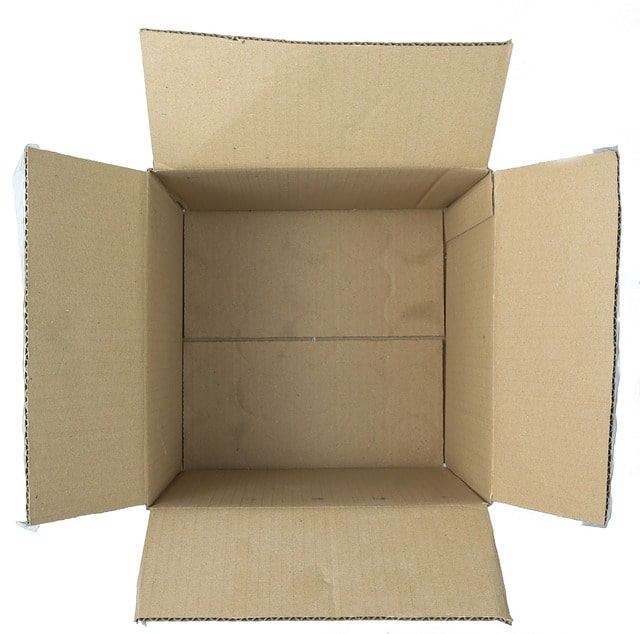This post comes to us courtesy of ShipStation, a provider of shipping fulfillment software for ecommerce and multichannel merchants.
You’ve just started your ecommerce business, and it’s taking off. Customers are eager to start receiving your product, but how are you going to handle getting everything from A to B?
Figuring out your optimal shipping process becomes steadily more important as you face the alternative of spending valuable time at the Post Office or UPS store waiting in long lines.
Drawn from our experience working with thousands of ecommerce merchants, we’ve compiled a list of the top three things to review and decide on before you get up and get going with shipping, from the players in the shipping ecosystem to your approach on returns.
1. Carriers & Rates
When most people ship in the U.S., they use one of the big three: USPS, UPS, or FedEx. They aren’t all there is, but we’ll dig into their rate structures before taking a look at consolidators, regional carriers, and international options.
USPS Rate Tiers
Retail Rates: These are the rates that you get when you walk into the Post Office. They’re the highest rates you’ll pay, especially considering the amount of time wasted standing in line.
Commercial Base Pricing (CBP): Deeper discounts than the Retail & Online rates, plus, using a provider like Stamps.com means you never have to step foot in a Post Office.
Commercial Plus Pricing (CPP): Even bigger discounts than CBP. These rates are usually volume-based and are negotiated directly with the USPS (and can be integrated into a provider account). CPP can save you serious money per package. Even though it tends to be volume-based, Express 1 offers CPP rates on Priority, Priority Express, and First Class International mail without the need for negotiating.
The following example shows 3 different package weights and their corresponding prices with the USPS’s different rate tiers. This is based off a Priority Mail package heading from Austin, TX to New York, NY. The CBP & CPP rates were generated using Stamps.com and Express 1, respectively.
| Weight | Retail Rates | CBP | CPP | Savings |
| 1 lb | $6.65 | $6.02 | $5.86 | 12% |
| 1 lb 8 oz | $10.55 | $8.98 | $8.29 | 21% |
| 5 lb | $19.20 | $16.58 | $15.89 | 17% |
FedEx & UPS
Retail: Whether purchased in-store or online, it’s the same rate. However, in-store means waiting in line and wasting time.
Contract/Negotiated Rates: Like CPP, these rates tend to depend on your volume but also how much you’ve spent with the carrier. However, due to the deep discounts offered, it’s absolutely worth speaking to your account rep with UPS and/or FedEx to see how you can get negotiated rates.
Dimensional Weight: This is based off the potential weight of the package—what the package COULD hold. If the dimensional weight is heavier than the actual weight, you will be charged the higher rate.
Dimensional Weight Formula (Domestic): L x W x H / 166 = Dimensional Weight
Always round up to the next whole pound, too.
Since both UPS and FedEx are now using dimensional weights, let’s examine how that can go wrong:
Let’s say you ship a teddy bear that weighs 5 lbs in a package that’s 18” x 18” x 12”. The formula for this package would be: 18 x 18 x 12 / 166 = 23.4, rounding up to 24. Suddenly, this 5 lb teddy bear is now being charged as a 24 lb package with dimensional weight. That’s a huge difference.
Now, what about those consolidators and hybrids? Or other services, like Flat and Regional Rates? This is where your options tend to build up.
Regional Rates: Offered by the USPS, it’s the best savings for small, bulky packages going a short distance but you MUST use the USPS Regional Rate package. If you’re shipping in-state or to your surrounding states, consider this.
Flat Rates: Offered by the USPS and FedEx, if you can fit it in their packaging, they’ll ship it for a (you guessed it) flat rate regardless of weight. The one caveat: like Regional Rates, you HAVE to use their Flat Rate packages.
Hybrids: UPS & FedEx partnered with the USPS to offer UPS Mail Innovations, UPS SurePost, and FedEx SmartPost. These hybrid services can save you up to 50% over standard rates but they do come with longer delivery times.
Consolidators: A consolidator (like DHL Global Mail, UPS Mail Innovations, Globegistics, Asendia, and many others) is a company that takes a large number of packages from multiple carriers (FedEx, UPS, USPS, etc.) and then delivers the package closer to the actual destination. These options can be a great way to get deeply discounted rates on postage without having to ship a large volume of packages yourself.
Regional Carriers: They only ship in a particular region of the country, but they tend to beat other options in terms of speed, price, and service. For example, LSO serves Texas and surrounding states and OnTrac serves the west and northwest.
Take Away: Use smaller boxes and NEVER pay retail rates for postage; always negotiate. You have options if you get tired of the usual suspects; explore them and find the right fit for your business!
2. Shipping Strategy
With carriers and their services covered, how do you know what to charge your customer for shipping? We’ve found three strategies that tend to rule the ecommerce world:
Free Shipping: Everyone loves free and more and more sellers are adopting Free Shipping totally or partially. If you haven’t yet, test the waters: offer it as a promotion during a holiday sale or on orders over a certain weight or quantity. That’ll encourage customers to buy more to hit that limit.
Besides that, being able to display “Free Shipping” on your site is a great piece of marketing.
Flat Rate: To successfully pull this off, you need to know the average cost of shipping a package at certain weights to determine if this will be worth it. You could make Flat Rate an option for shipping after a certain quantity threshold is met as it may not make financial sense for single item orders.
Charge What You’re Charged: There are some plugins that allow you to show live rates at check-out but they usually won’t take negotiated rates into play. You’ll typically see minor discrepancies but ultimately, you can end up breaking even between the shipping charges you collect and what you ultimately pay to ship the package.
Strategy Take Away: This all comes down to your business—what can you afford to offer & what works for your products. Free gets more attention but isn’t always profitable. Try and work in the price of shipping into the products themselves.
3. Returns
You always hope a product stays sold but returns are inevitable. Handling returns breaks down quite simply: either include a return label with the order, or send as needed.
Include With Order: If you sell the sort of thing that’s often returned or exchanged, like clothing, or if the order is notated as a gift, you should consider including a return label. UPS charges 50 cents if it’s unused (and the full price once the return label is scanned) which can work wonders for promoting a hassle-free return policy.
Since USPS charges up front for the return label, if you opt to include it with everything, you could use a cheaper (sometimes slower) service like Parcel Select or First Class Mail.
As Needed: When a customer requests a return, provide them a label!
Straightforward, right? What ties it all together, though, is having a clear and concise return policy in place that’s easily accessible for your customers. Include it in the footer of your packing slip or in the shipment confirmation email.
With the shipping basics mastered, you can focus on building your shipping process and doing what you love: creating & selling.
And just like that, you’re ready to get ship done. Remember, though—from carriers & services to return policies to shipping strategies, don’t be afraid to try something different. Find what works best and hone in on that. Your customers will thank you for it.
ABOUT SHIPSTATION:
ShipStation makes shipping & fulfillment the simplest part of your day. With automation rules, wireless printing, user accounts, filters, and tons more, you can make your ShipStation experience as unique as your business. With over 70 selling channel integrations and over 20 carriers, all you need to do is plug in your store, get a free USPS account, add any other carriers you have, and get ship done.











